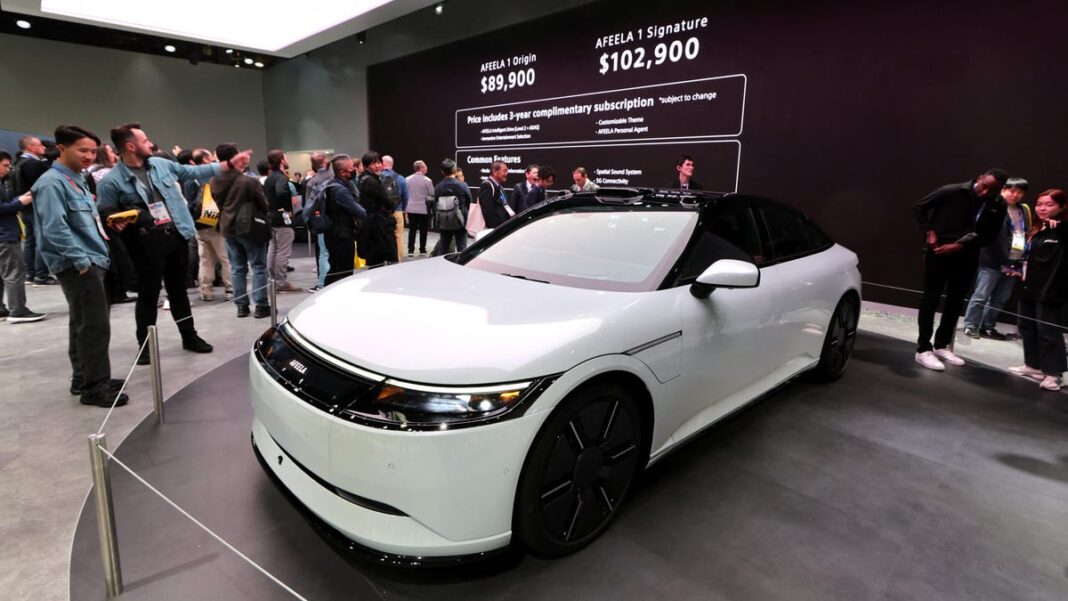The driving experience of tomorrow at CES 2025: AI’s role in transforming the automotive landscape
While many of us are now familiar with generative AI (GenAI) on our smartphones, PCs, and tablets, it’s also making its way into our vehicles.
At this year’s CES event in Las Vegas, there was significant emphasis on cutting-edge technology in all types of vehicles, particularly highlighting the role of AI in enhancing the driving experience.
Automakers like BMW and Honda showcased GenAI-enabled assistants integrated into their vehicle infotainment systems, offering benefits such as enhanced directions and hands-free operation of various features. Additionally, companies like Nvidia and Qualcomm discussed how they are utilizing GenAI models to advance assisted and autonomous driving technologies.
Nvidia made a notable point in its keynote about the integration of AI into real-world applications using new AI-powered foundational models and digital simulation tools, particularly in the contexts of autonomous driving and robotics.
A prominent theme at the show was the emergence of software-defined vehicles (SDVs), a subject that Qualcomm and several chip manufacturers have been exploring for years. Simply put, an SDV allows a car to function similarly to smartphones, where new features and enhancements can be delivered through over-the-air software updates. While the idea of SDVs has been around for a while, this year’s CES showcased concrete evidence that this concept is rapidly becoming mainstream, extending beyond just premium electric vehicles.
Moreover, the advancements in AI and SDVs can be synergistically combined to allow vehicles to autonomously upgrade their algorithms that manage assisted and autonomous driving functionalities. This leads to an increasingly digital and AI-integrated driving experience that will influence a wide range of new cars and trucks — and our interactions with them — starting later this year.
These themes were explored during a panel I moderated titled “Revolutionizing the Future of Driving, Unleashing the Power of AI”, featuring speakers from BMW, Honda, Rivian, Nuro (an AI-centric autonomous driving startup), and Arm (the session sponsor whose design chips are utilized by Nvidia, Qualcomm, NXP, and many other automotive tech firms).
The 30-minute discussion (available for viewing here) provided an insightful look at how these companies are implementing AI through various systems and technologies in their vehicles. If you’re interested in how the automotive sector is expected to develop in the coming years, I highly recommend watching the recording.
Among the topics discussed was the exciting possibility of conversing with your vehicle, facilitated by AI-driven assistants capable of understanding questions and delivering meaningful responses. While many vehicles have had voice command features for years, they have often lacked depth in their response capabilities.
In the next generation of vehicles, users will be able to interact in a more natural way, receiving beneficial answers. For instance, during a road trip, a driver might ask for recommendations for the best Thai restaurants along their route based on predicted traffic patterns. The vehicle could suggest options (and eventually learn personal preferences), integrating the chosen location into its navigation system.
New safety features are also on the horizon, including monitoring driver drowsiness with the ability to alert them and safely pull the car over if no response is given.
Another fascinating potential is sharing personal preferences collected by AI-powered assistants on our devices to maintain a consistent digital identity across all platforms, including our cars. Though there are challenges to address, particularly regarding privacy and security, this possibility adds an interesting dimension for the future.
Some of the latest vehicles from major manufacturers are beginning to implement some of these discussed concepts, but it’s evident from CES discussions that significant advancements are imminent and accelerating. Early explorations with GenAI suggest its greatest potential lies in creating more intuitive user experiences. While the latest car technologies may be innovative, their usability can be a hurdle; thus, the movement towards truly “smart” vehicles is a critical advancement.
Bob O’Donnell, a news columnist, is the president and chief analyst atTECHnalysis Research, a market research and consulting firm. Follow him on Twitter@bobodtech.

